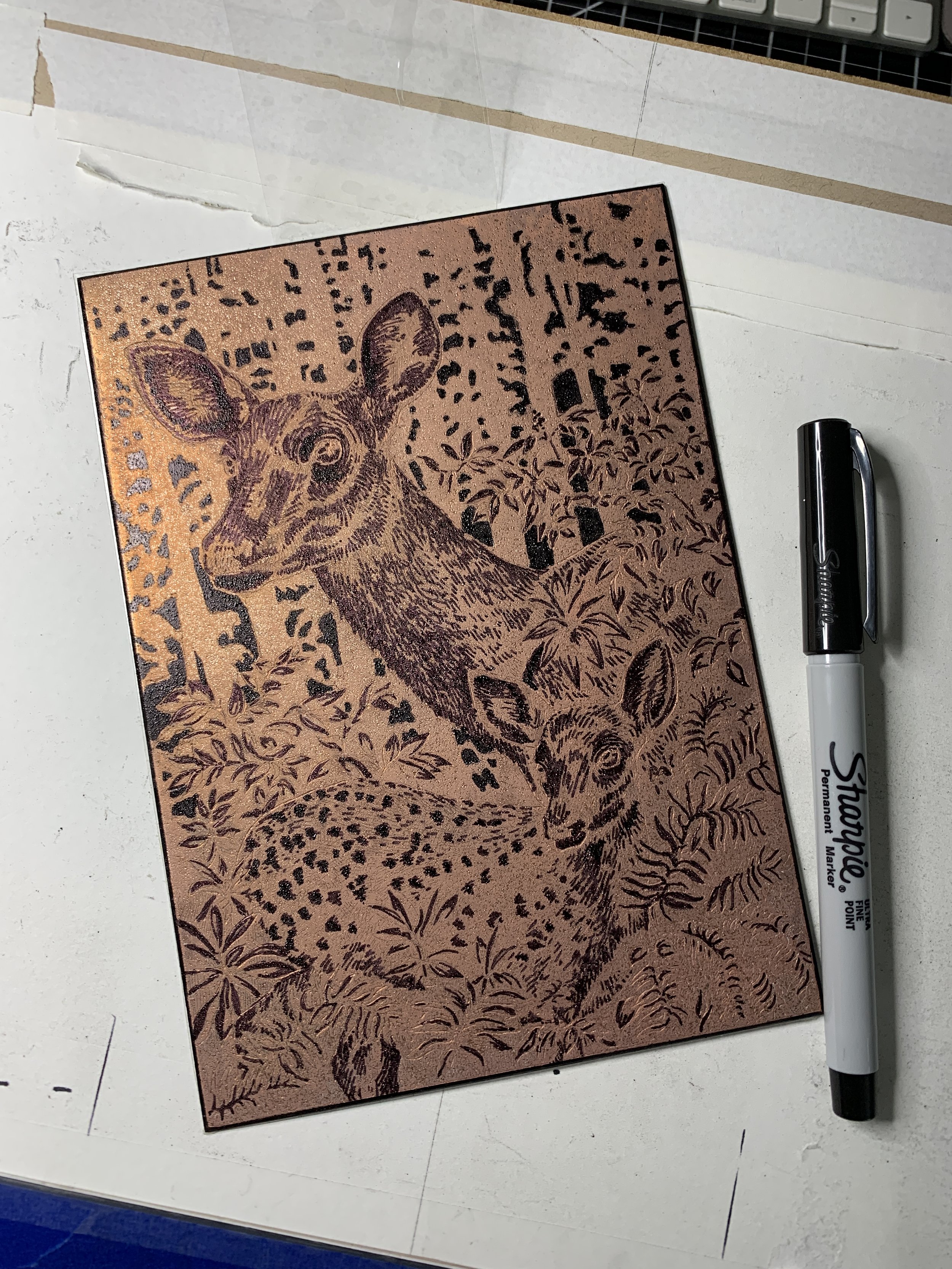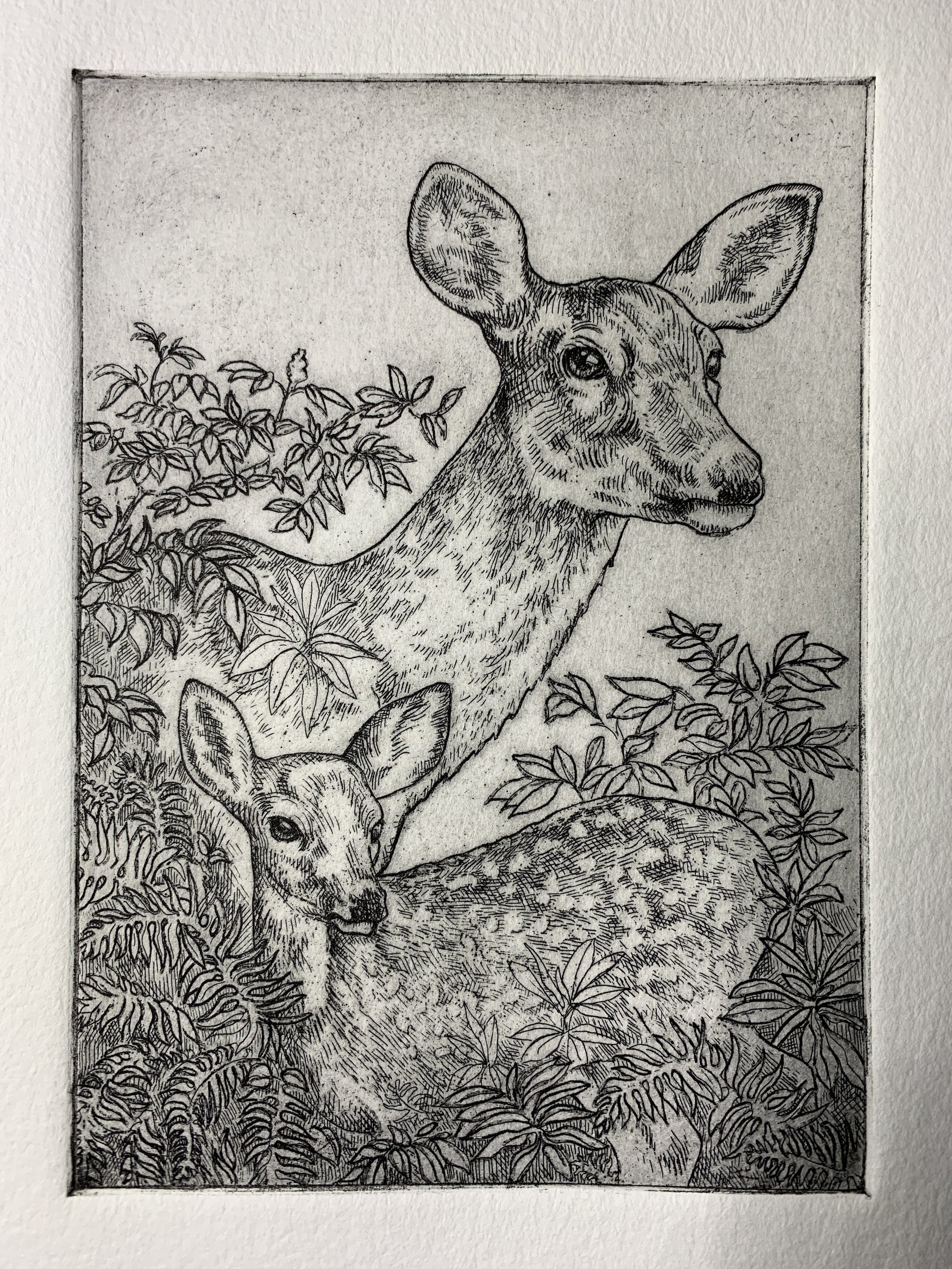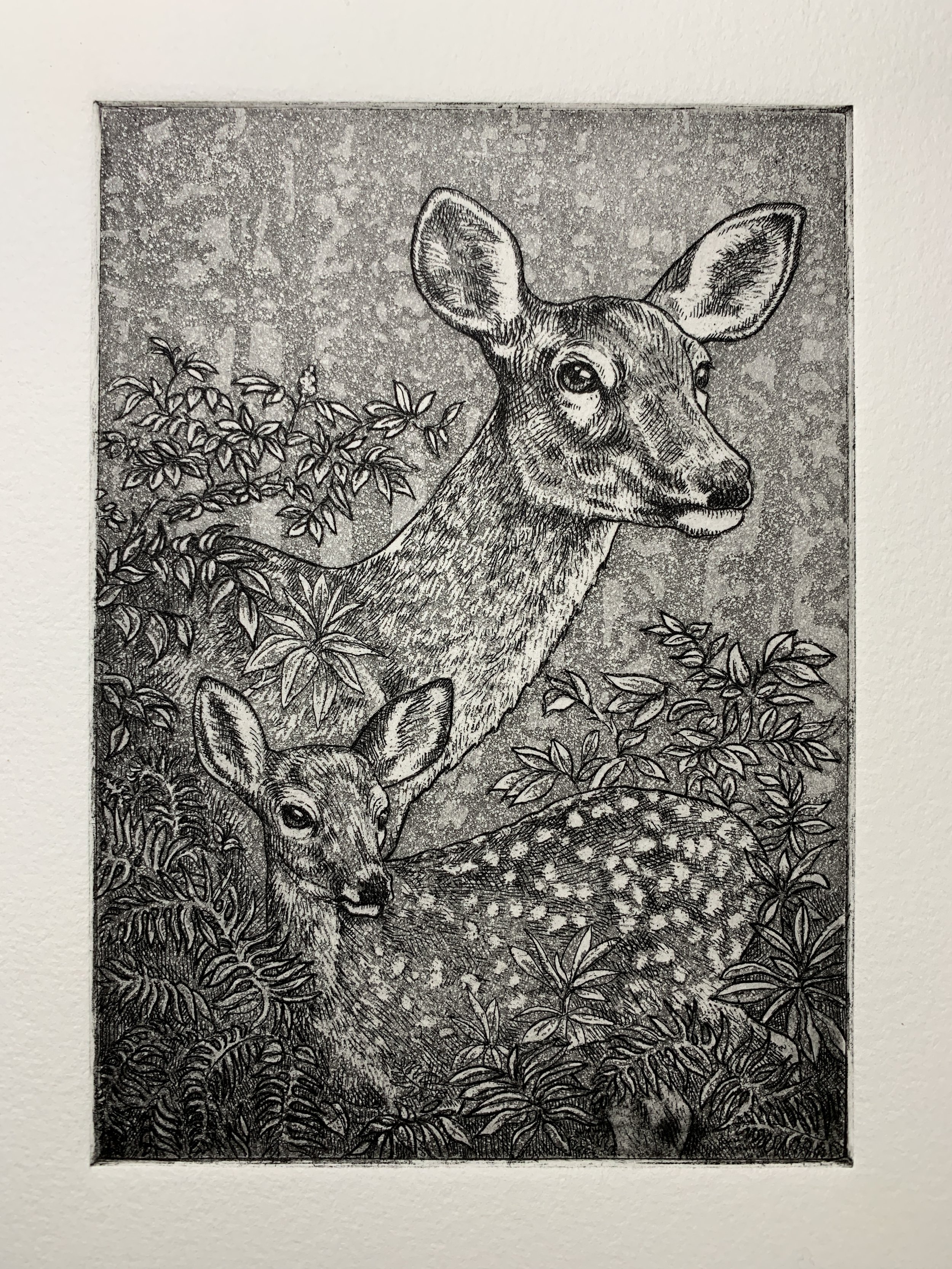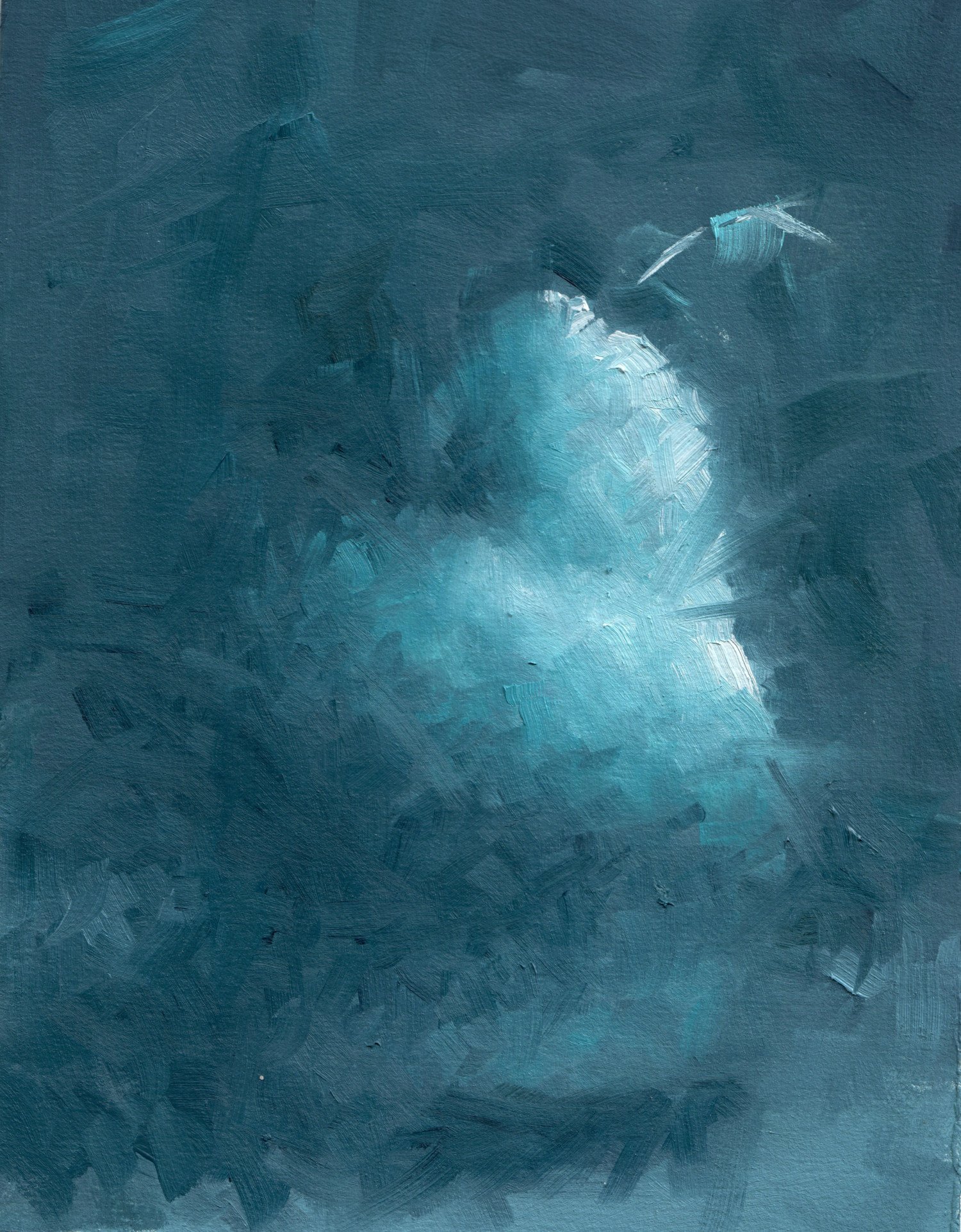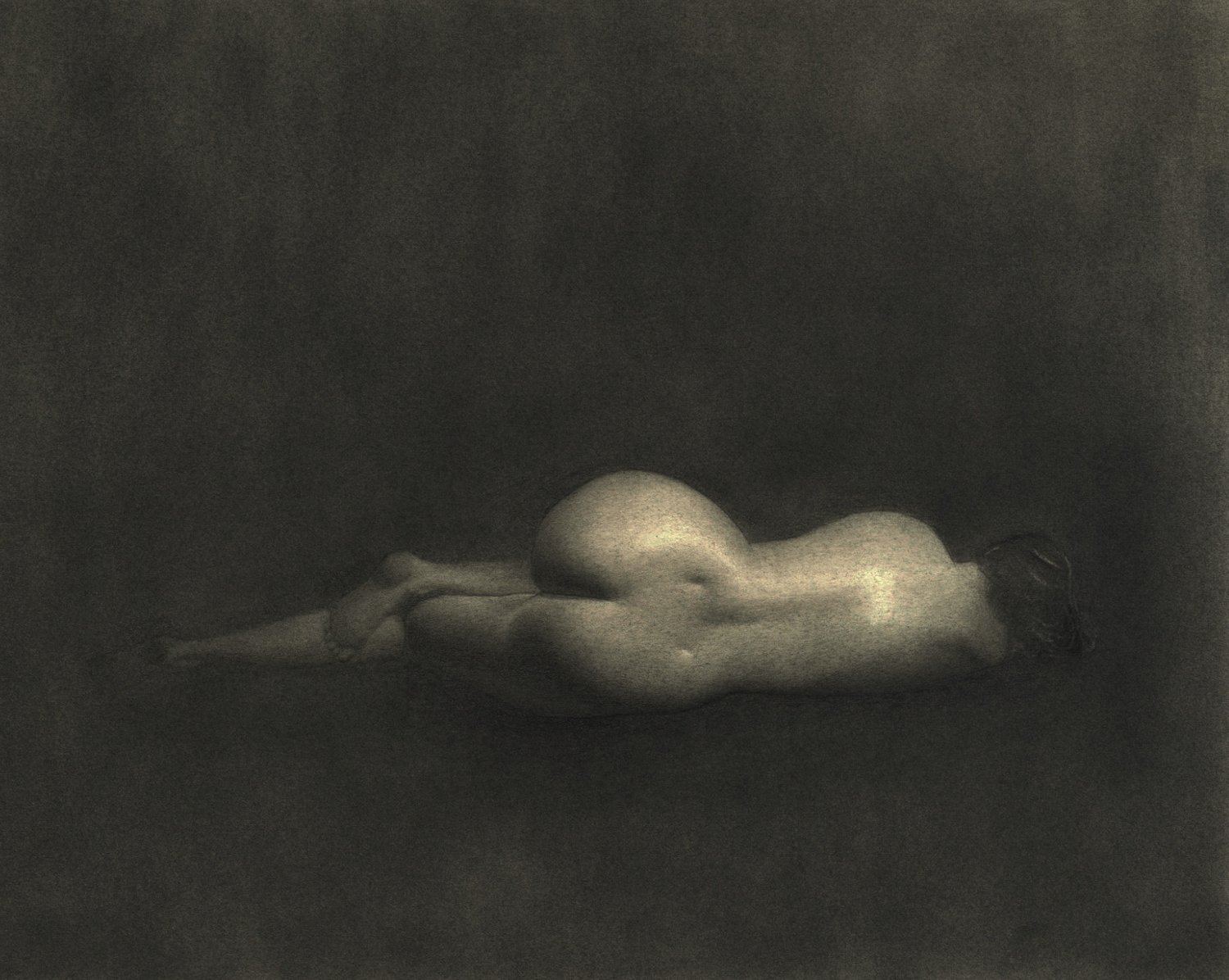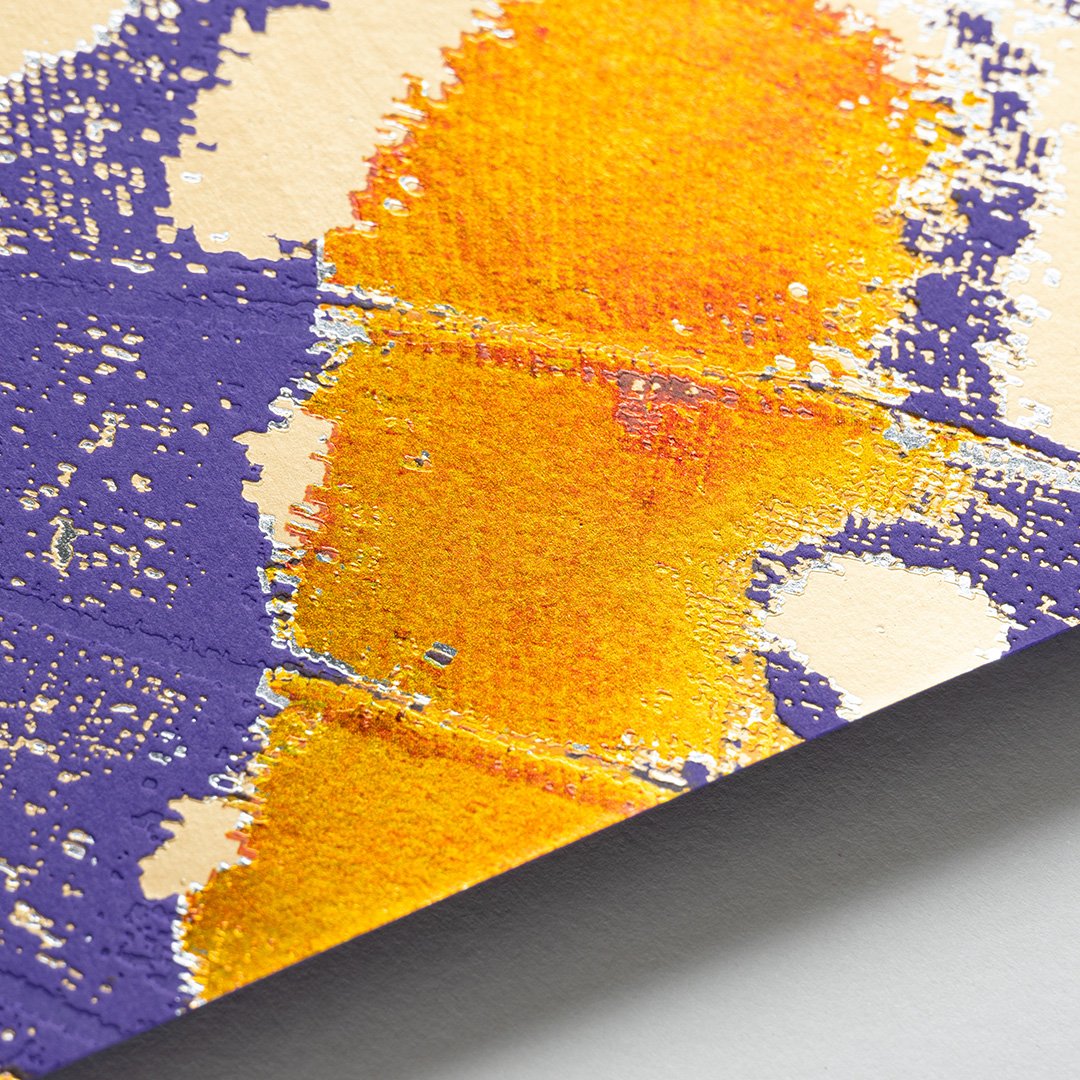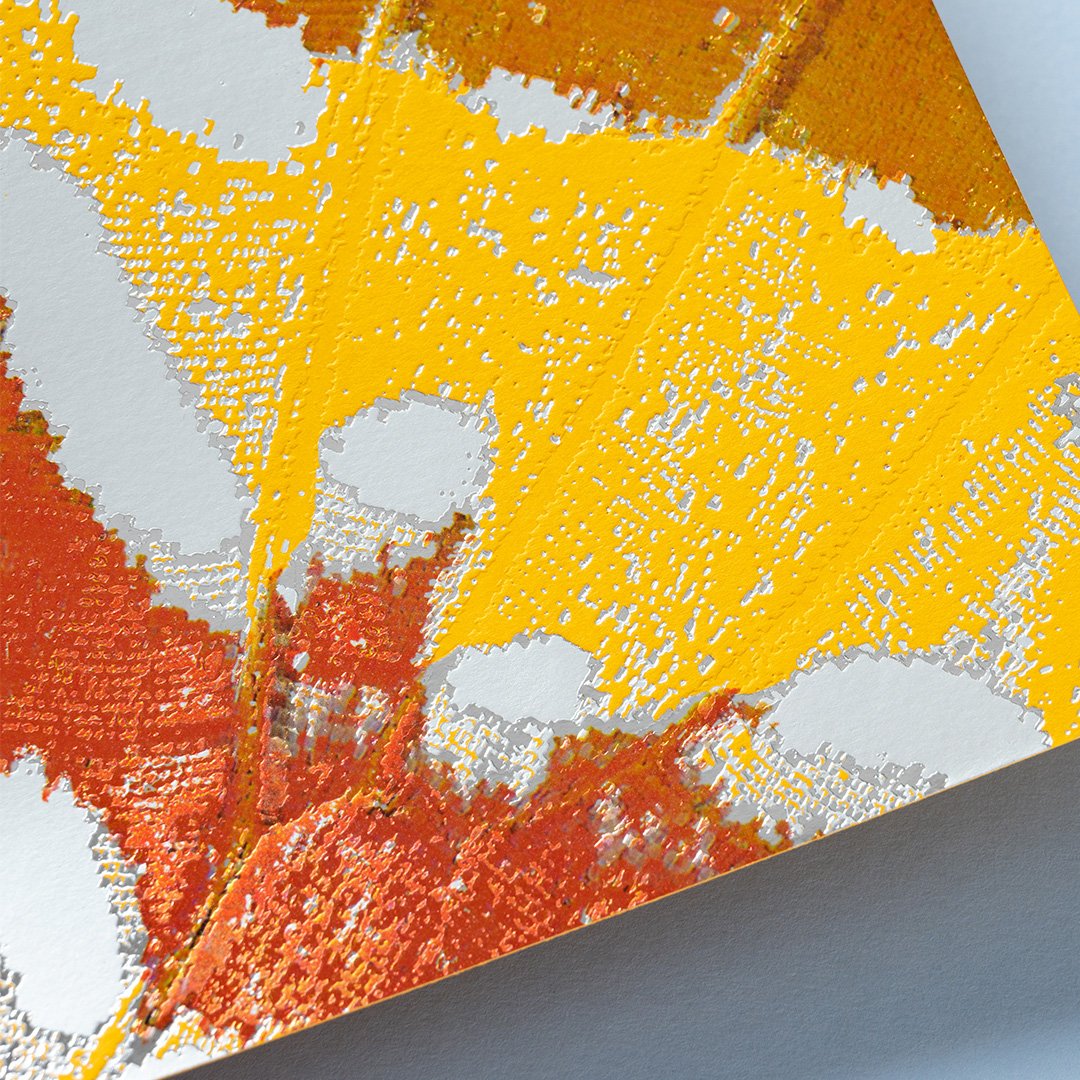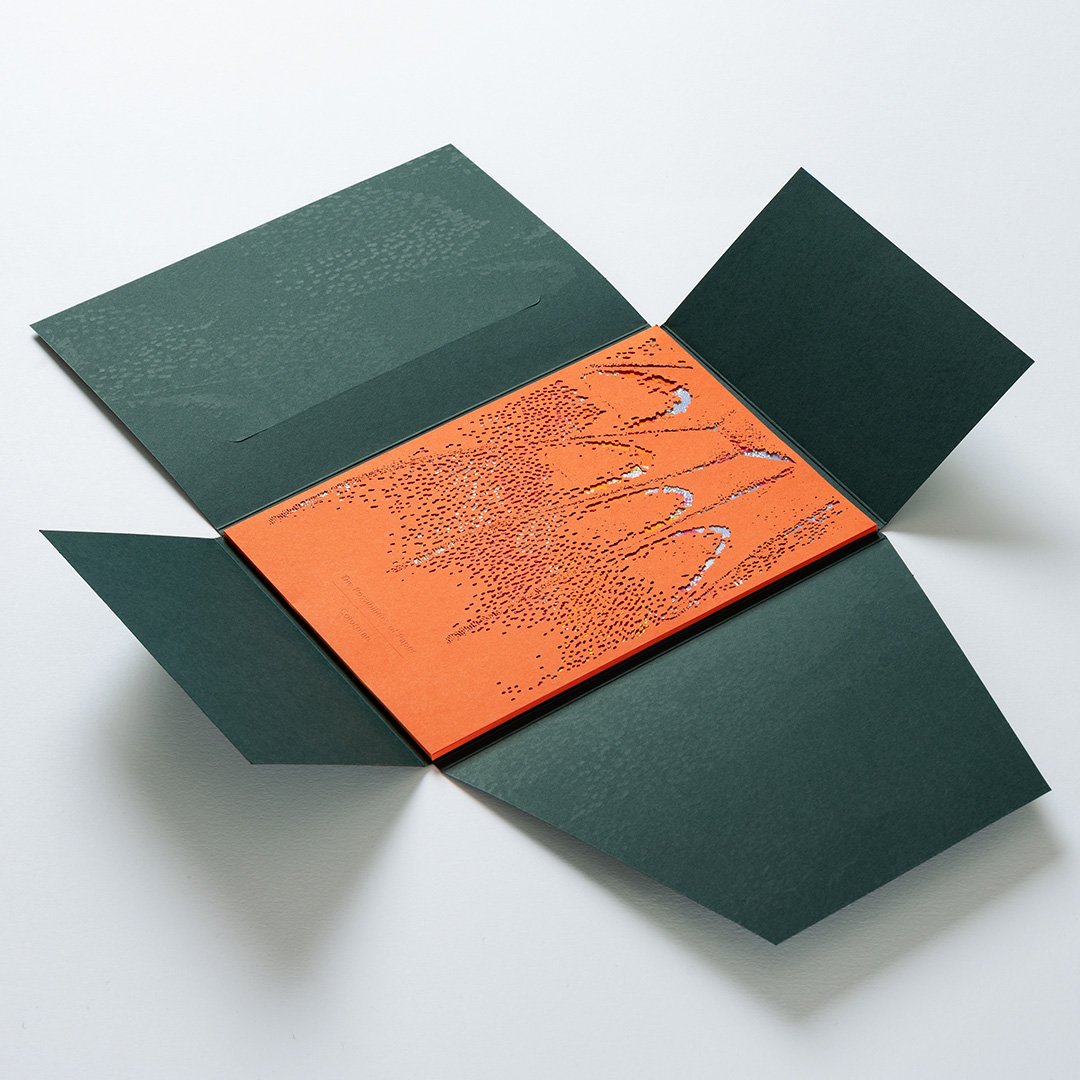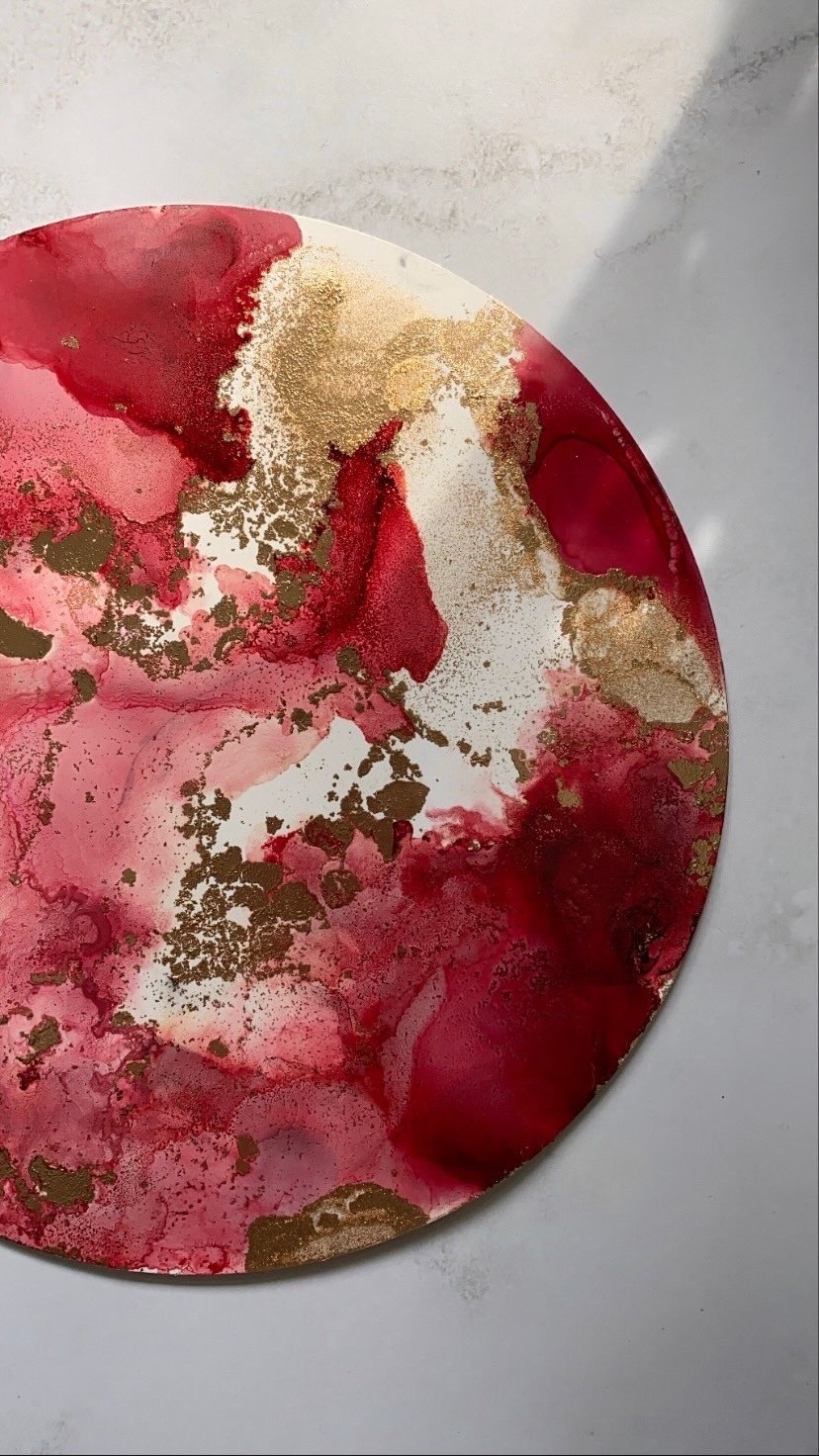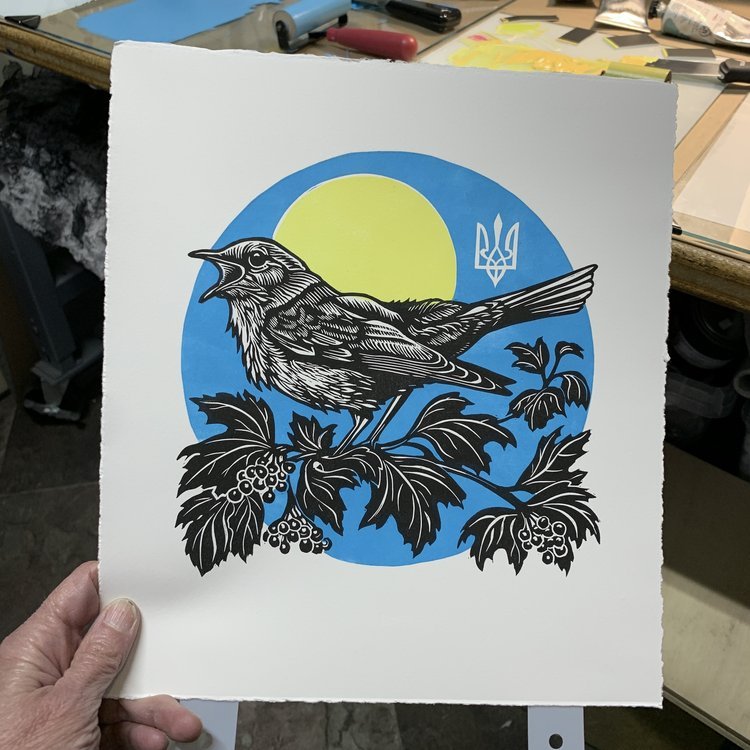Professional printmaker and printmaking tutor Kathryn Anderson takes us through the print process she uses when printing her etchings. Kathryn is an ambassador for Somerset paper and is known for her highly detailed prints capturing the beauty and mystery of the natural world.
ABOUT ETCHING (Intaglio)
Intaglio is the opposite of relief printing. I always think of it this way: Etchings print what’s BENEATH the surface and relief prints print what is ON the surface.
Creating etchings is a very old technique. They were first produced around 1500. Some of the great etchers include Durer, Rembrandt, Goya, Degas, Picasso, Matisse and so many more!
An etching is created by incising lines on a metal plate with a corrosive solution and then applying ink to the plate. The ink is pushed into the lines and the surface is wiped clean. Dampened paper is then laid on top of the plate and passed through an etching press under great pressure which pushes the paper into the incised lines and transfers the ink to the paper.
Let’s look a bit deeper into the process!
DRAWING UP YOUR DESIGN
Create your imagery to fit your copper plate. Once you’ve established your design, it can be drawn directly or transferred to the prepared copper plate.
PREPARING THE PLATE
I use copper plates for my etchings. Here are the steps to get it ready to image:
Use standard sized plates or cut the copper plate to the size you want. (I use a coping saw)
File the edges to a nice 45 degree (ish) bevel on top and sand smooth. (So you don’t trap ink there or cut your paper, or press blankets, or yourself!)
Lightly sand the surface to erase small scratches and make the surface very smooth.
Polish the surface of the plate (using metal polish) and de-grease with whiting and vinegar.
Now your plate is ready to be imaged!
CREATING LINEWORK
In this step we will create linework and etch the copper plate with Ferric Chloride.
There are different ways to do this, but this is what I do.
Make sure your plate is clean and free from oil.
Apply a ‘ground” which resists the Ferric Chloride. I prefer hard ground for fine lines.
Draw your lines with an etching needle through the hard ground to expose the copper.
Cover the back with an acid resist that doesn’t scratch off, either varnish or adhesive backed shelf liner.
Submerge your plate in Ferric Chloride to etch the plate. The length of time in the Ferric will determines the depth of the line. Deeper lines hold more ink and print darker.
Remove the plate and clean the ground off with mineral spirits.
You’re ready to pull your first print!
PRINTING THE ETCHED PLATE
The first step is to print a proof of your etched linework plate.
Apply etching ink to the etched plate surface and work it into the lines. A matboard tab can be used to spread the ink and remove the excess.
With a combination of wiping with stiff cheesecloth (Tarlatan or other wiping fabrics) and newsprint paper the surface ink is removed leaving the incised lines with ink. You can also choose to leave a thin layer of ink to create tone.
Don’t forget to clean those beveled edges!
Place the copper plate ink side up on the etching press.
Blot your dampened paper and lay it on the plate.
Put a sheet of newsprint on top and roll down the felt etching blankets. There are three blankets on an etching press: the sizing catcher, the cushion, and the pusher on top.
Engage the press to apply pressure to the paper covered plate. This pressure will push the dampened paper into the plate and transfer the ink to the paper. The pressure will also create a “Plate-mark” which is the hallmark sign of an etching.
Gently lift the blankets and newsprint and carefully lift the paper off the plate.
VOILA!! You have your first proof!
At this point I decide what comes next. Do I like the line proof as is, or do I want to add tonal values?
CREATING TONAL VALUES
There are lots of ways to create tonal values on your plate, my favorite is Aquatint.
Aquatint is an etching process that creates a texture that is etched into the plate to hold ink. It can be done with traditional powdered rosin or with the more recent method of spray paint. I use rosin
(Note Rosin can be hazardous if inhaled, so always wear gloves, mask, and eye protection when using)
Clean and degrease the line-etched plate
Apply powdered rosin to the surface and heat until it begins to melt and adhere to the plate.
The tiny dots are resistant to the Ferric and create a texture that holds ink. The longer you submerge the plate the deeper the etch and thus the amount of ink it holds.
A series of tonal values can be achieved by blocking of the lightest value on the plate (I like permanent Markers of varnish) and dipping in the Ferric for a short time. After the plate is removed from the Ferric you can block out the next area of lighter tone and etch it again. You can do this for multiple times to create a full range of values. (Note: It is VERY important to run a test plate to better understand the timing of the etch and the resulting tonal value.)
After you have finished creating your tonal values you need to remove the aquatint (Soaking in denatured alcohol works well) and you are ready to print!
THE BIG REVEAL!!
Ink up your plate and print as you do with the line etching. VOILA! Your beautiful etching!
There are other methods of creating intaglio work including drypoint, mezzotint, photogravure, heliogravure, and engraving.
AN IMPORTANT NOTE ABOUT PAPER
It’s very important to use the right paper. Etching paper needs to be soaked in water for at least 30 minutes (depending on paper type) and gently blotted just before printing.
Etching paper must be soft but strong under pressure.
My favorite Somerset Paper for etching is Somerset Textured. It comes in cream, white, and softwhite and prints BEAUTIFULLY! It has just the right amount of sizing and prints wonderfully on even the most delicate images. Somerset Velvet is another excellent choice for very fine work with its smoother texture.
IN CLOSING
Etching is a challenging and extremely rewarding printmaking method. I have to admit, it’s my favorite medium for creating prints. (I love a challenge!)
There are lots of variables in this process, but using the best papers takes some of the guesswork out of the equation and makes printing a joy!

